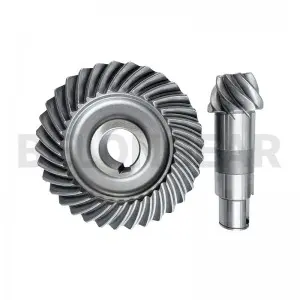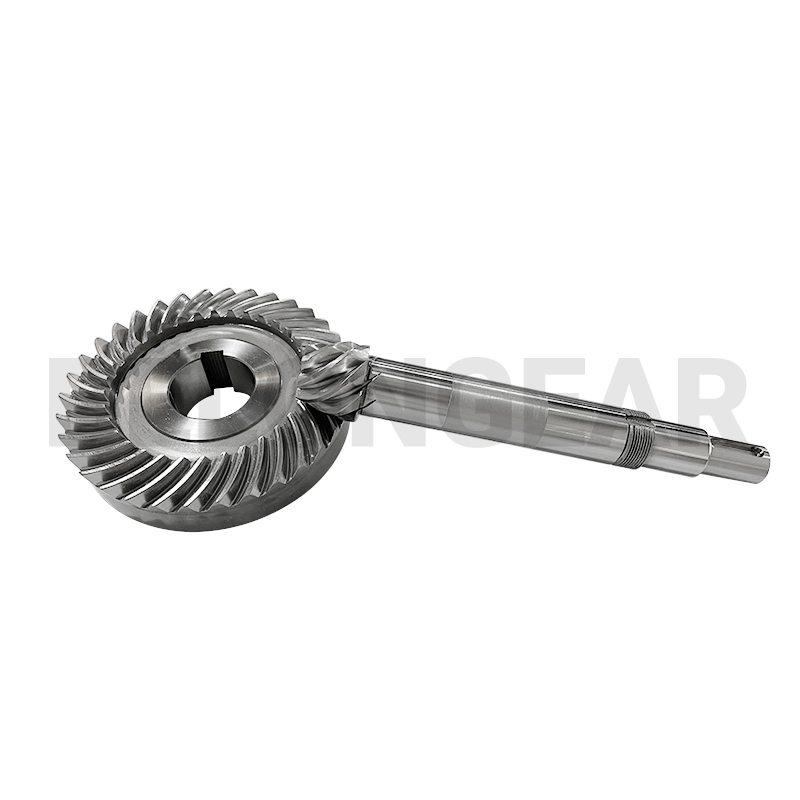Bevel gears are essential components in various mechanical systems, transferring motion between intersecting shafts efficiently. Determining the direction of rotation in bevel gears is crucial for ensuring proper functionality and alignment within a system. Several methods are commonly employed to determine this direction, each offering its own advantages depending on the specific application and requirements.
Here, we’ll explore some of the most common methods used for determining the direction of rotation in bevel gears:
Visual Inspection: One of the simplest methods is visual inspection. By observing the gear teeth and their orientation relative to each other, it’s often possible to determine the direction of rotation.Bevel gears typically have teeth that are cut at an angle, and by examining their alignment, you can infer the direction of rotation. However, this method may not always be accurate, especially in complex gear systems.
Right Hand Bevel G ear Rule: The right hand rule is a widely used technique in mechanics for determining the direction of rotation. In the case of bevel gears, if you point your right thumb along the direction of the input shaft and align your fingers with the direction of the teeth on the driving gear, your curled fingers will point in the direction of rotation of the driven gear. This rule is based on the principles of vector cross products and is particularly useful for quick calculations.
Marking and Testing: Another practical method involves marking the gears and physically rotating them to observe the resulting motion. By applying a known input torque or manually turning one of the gears, you can determine the direction in which the other gear rotates. This method is straightforward and can be done without complex calculations, making it suitable for quick checks during assembly or maintenance.
Simulation and Modeling: With advancements in computer-aided design (CAD) software, engineers can create detailed simulations and models of gear systems. By inputting the parameters of the gears and their arrangement, these software tools can accurately predict the direction of rotation and simulate the behavior of the entire system under various conditions. This method is highly accurate and useful for complex gear arrangements but requires access to appropriate software and expertise in modeling.
Analytical Calculations: For engineers and designers familiar with the mathematical principles governing gear systems, analytical calculations can be used to determine the direction of rotation. By analyzing the gear ratios, tooth profiles, and input torque, equations can be derived to predict the direction of rotation of the driven gear relative to the driving gear. While this method may be more time-consuming, it offers precise results and deeper insights into the mechanics of the gear system.
Determining the direction of rotation in bevel gears is a critical aspect of designing and maintaining mechanical systems. While various methods exist, ranging from simple visual inspection to complex analytical calculations and simulations, the choice depends on factors such as the complexity of the gear system, available resources, and the level of precision required. By employing the appropriate method, engineers can ensure the proper functioning and efficiency of gear systems in a wide range of applications.
Post time: Mar-07-2024






